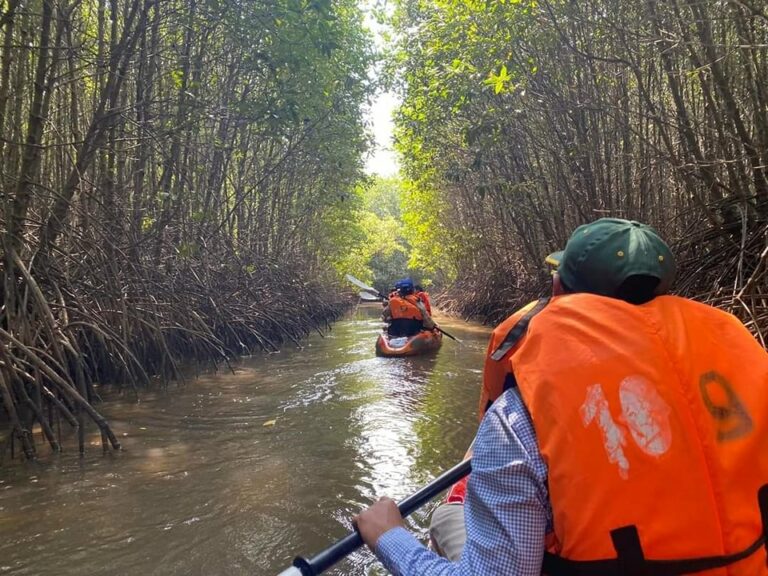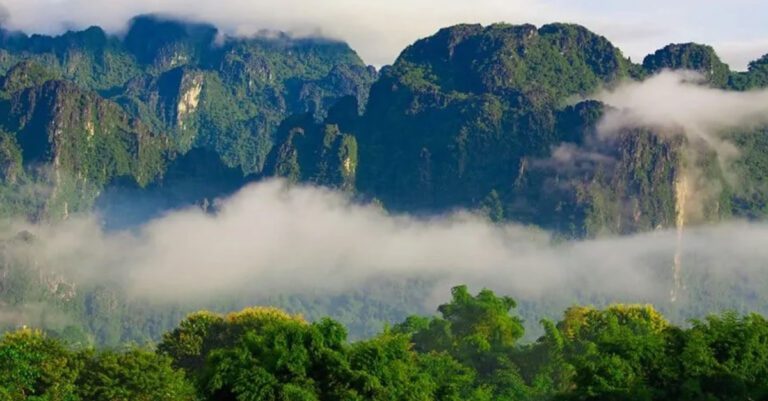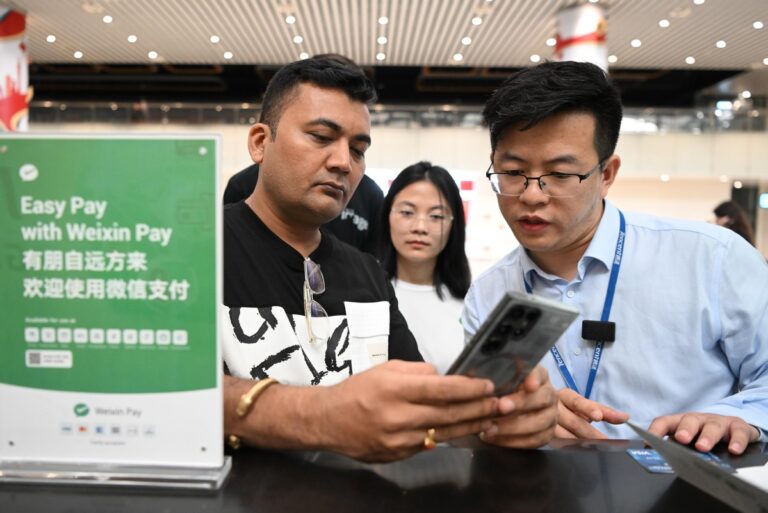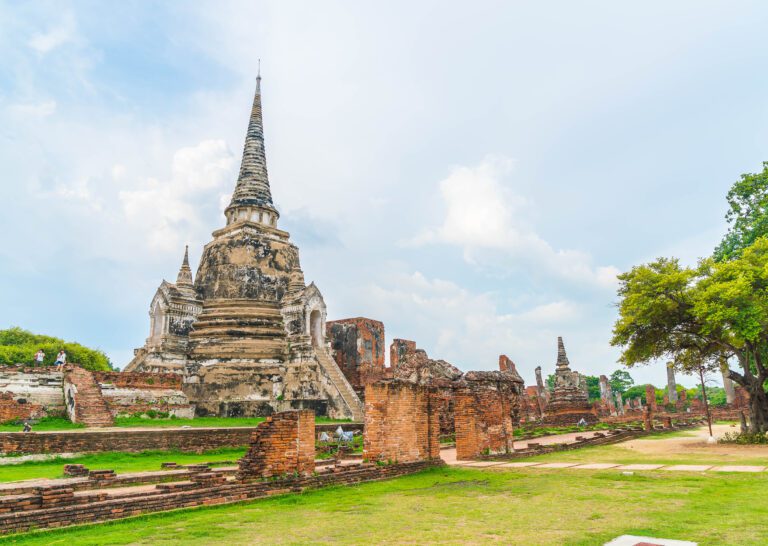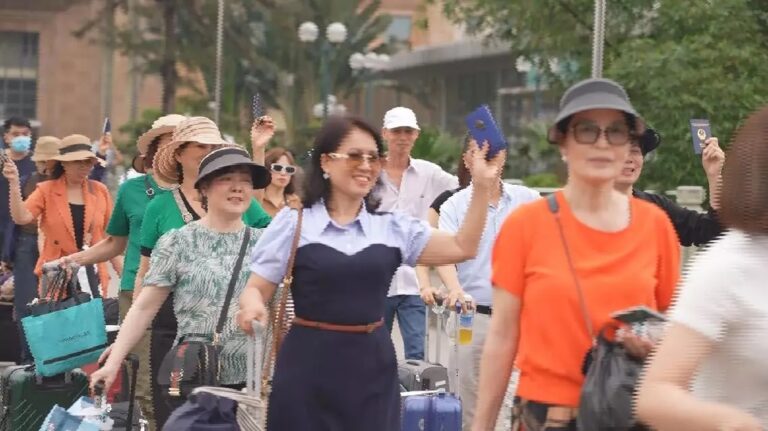Nature rules in the Lao PDR – relative to its neighbors in the Greater Mekong Sub-Region (GMS), the Lao countryside bears less of the scars of tourism that have affected more developed countries nearby.
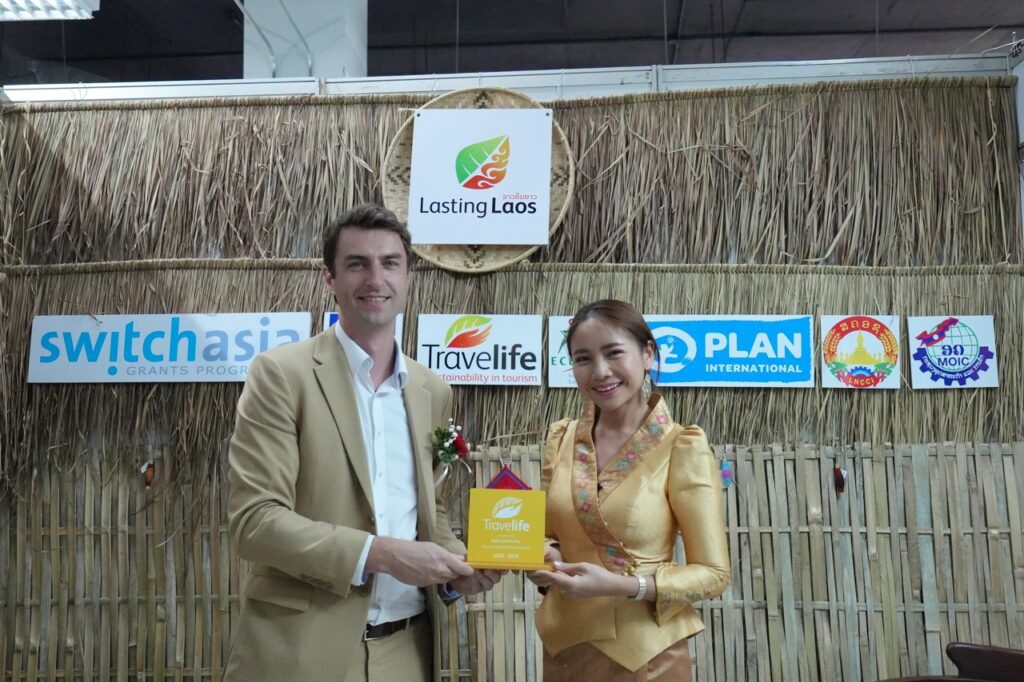
This has been a double-edged sword for tourism businesses in the Lao PDR, who often lack the institutional support they need to promote their business, thrive in a competitive regional tourism market, and pursue sustainable practices in the process. An underdeveloped tourism industry in the Lao PDR also means that young Lao adults cannot rely on local tourism and hospitality for employment in the same way their peers in neighboring countries do.
To help tourism businesses in the Lao PDR overcome these institutional hurdles, NGO Plan International set up a four-year program it calls Sustour Laos: integrating Lao PDR tourism businesses into global tourism supply chains by promoting the Travelife sustainability program among Lao PDR hotels and tour operators; and a complementary certification called Lasting Laos for tourism MSMEs.
Funded by the European Union, Plan International Laos has rolled out Sustour Laos across Luang Prabang Province, Vientiane Province, and Vientiane Capital, with a projected end date of July 2024.
We recently talked to Sustour Laos’ project manager Connor Bedard to find out what Sustour Laos has accomplished at its plan’s midpoint; what benefits Travelife certification provides for Lao MSMEs; and what he hopes to accomplish by the time 2024 rolls around.
This interview has been edited for length and clarity.

Speaking as someone who works with Lao PDR businesses on sustainability, what are the key challenges are that your partners face?
At Sustour Laos, we work with businesses to try and improve their sustainability and help them achieve sustainability certification, including Travelife certification. The challenge is helping businesses understand the benefits of making significant changes to their operations: to meeting certain standards or having certain practices, whether it’s labor practice or environmental practices or energy consumption, waste management, etcetera.
We provide training and coaching, free of charge. We cover the cost of the certification under the project. And we also have a project around marketing and promotion: we work with our partner in Travelife to promote businesses that get certified within the network. We support businesses to go to trade shows. We had some at the ITB Asia and Singapore and we’ll support some future ones.
Some of the businesses we work with are already doing a lot of the things that you would need to get certified, whereas others have to make some big changes. For the latter, it’s a bit more difficult to show them what the benefit is to certification, or demonstrate where the market is for that.
When you communicate to them what the benefits are, what do you emphasize to businesses you’re trying to start the certification process with?
We try to make it as attractive as possible to the businesses. We say, “Look, if you come with us, if you really are committed to this, we’ll support you. And if you get certified, or at least you show you’re committed, then you’re going to get some other benefits that the project may provide.”
Just improving your own operations is a benefit: when you go through the Travelife process, there’s a lot of the business that you have to assess. And that process is going to improve your management and your staff.
There’s opportunities to increase your energy efficiency, improve your waste management. And if you’re a big hotel and you have to make some changes around energy efficiency, you could see actually some significant cost savings there.

They will also be able to tap the growing market for sustainable tourism. We know that tourists say they choose sustainable businesses. There’s a lot of surveys out there that say consumers would select the certified hotel over a non-certified hotel. On some booking sites, for instance, you might see a little icon for a property in the Travelife system, saying it’s a sustainable property.
And when you’re talking about B2B agents in the large-sized markets in Europe, North America, Pacific region, you know a lot of them are looking for partners in destination countries that have some sort of certification, Travelife being the most widely known.
What’s getting in the way of businesses pursuing certification?
It’s quite a comprehensive process to get Travelife certified: depending on the business, it can take about a year, two years, depending on how much time and resources you’re willing to put into it.
Also, right now, we have a lack of quality and skilled staff working at the businesses that are able to actually undertake the certification process: doing the reporting, setting up the management systems, sustainability procedures and policies within the organization.
There’s also the lingering effect of COVID: a lot of businesses were operating at 30%, a lot of people left were laid off, businesses shut down. Now they’re restarting, and they don’t have the same staff that they had before COVID.
The staff that we need to work with on these things, whether it’s the management or operations lead or the owner, they just don’t have the time! They’re doing so many things now, because they just don’t have enough human resources within the business system.
How many businesses are currently undergoing the certification process with Sustour Laos, and how many have already achieved Travelife certification thanks to your work?
Right now, under the project, we have five businesses, all hotels that have achieved the Travelife certificate. These are four in Luang Prabang, one here in Vientiane.
Before the project started, there were already three tour operators which were certified, and then four which are at a lower level called partner level. They’ve basically done all the reporting online and it’s been checked and confirmed, but they haven’t had the independent audit.
So in total, that brings us to, I think 12 businesses in all, who are either certified or partner level.
With a hard deadline of 2024, how can you make headway certifying thousands of tourism businesses throughout the Lao PDR?
Travelife is only available if you’re a hotel or if you’re a tour operator, travel agent, or destination management company. Those are the only businesses that are actually eligible for Travelife.
And where we work is the main tourism corridor: of the hotels that have been certified, we have four in Luang Prabang, one here in Vientiane; and for the tour operators, they’re either based in Vientiane or Luang Prabang, but they work all over the country.
When we’re talking about a small cafe, or a van transporting tourists between Vientiane and Vang Vieng, they’re not going to meet the 200-plus criteria of Travelife, much less go through that process. To certify a smaller supplier business in Lao PDR, we have to ask: what is realistic? We’re improving the standard and operations of these businesses, but what is achievable?
So as part of the project we also developed a local certification for supplier businesses called Lasting Laos: a local supplier certification for businesses and transportation, food, beverage, handicraft and cultural excursions. It’s based on Travelife, we use Travelife criteria and methodology, but it’s locally adapted and awarded with our partner, the Chamber of Commerce.
The Lasting Laos certification has 20 to 30 criteria for each sector, hitting the main points in the Travelife criteria, but is more achievable and realistic. It’s more locally adapted for the reality of those businesses and those sectors.
Similar to Travelife, there’s a training, coaching, internal reporting and then auditing process to get certified. We’re going to each location and do these big events and information sessions for businesses and try to get them registered.

What was the localization process like – and how well has Lasting Laos been received by the businesses you’re reaching out to?
We developed Lasting Laos in consultation with about 200 businesses. We asked them to prioritize which sectors really need standards or improvement, or would benefit from a sustainability certification. And those are the sectors that we developed Lasting Laos for.
With the Lasting Laos campaign, I would like to see that we’ve developed something that has uniquely marketed Lao PDR as a sustainable tourist destination without greenwashing. It’s based off of businesses that are actually trying to improve their operations or have become certified.
So I think in that regard, those are the things that I’d like to see and that that that campaign is really reached.
By 2024, what will you have wanted to achieve for Travelife and Lasting Laos certification in Lao PDR?
We have certain KPIs for the project in terms of number of certified businesses. I think at this point it’s not likely we’re going to meet our targets for Travelife certification.
For Travelife, if I’d just be happy to see those first five businesses certified.I hope other businesses will look up to them and also try to do it themselves. So we hope a second or maybe a third group of businesses gets certified within the next year and a half.
For Lasting Laos, our goal is that we’ll have 250 businesses certified: if we could achieve that by the end of 2024, I would be really happy to see that.
Do you feel that tourism businesses in Lao PDR are still behind the curve in terms of in terms of providing sustainable travel options, or do you feel they’re quickly catching up?
I think in a lot of ways Lao PDR is behind the rest of Southeast Asia: in terms of businesses meeting certain international standards, there’s no question that the country lags behind the rest of Southeast Asia.
But Lao PDR has more untouched nature than you would see in other parts of Southeast Asia. So in that respect, Lao PDR is ahead. And that’s also part of the appeal, what sets it apart from the rest of Southeast Asia.
